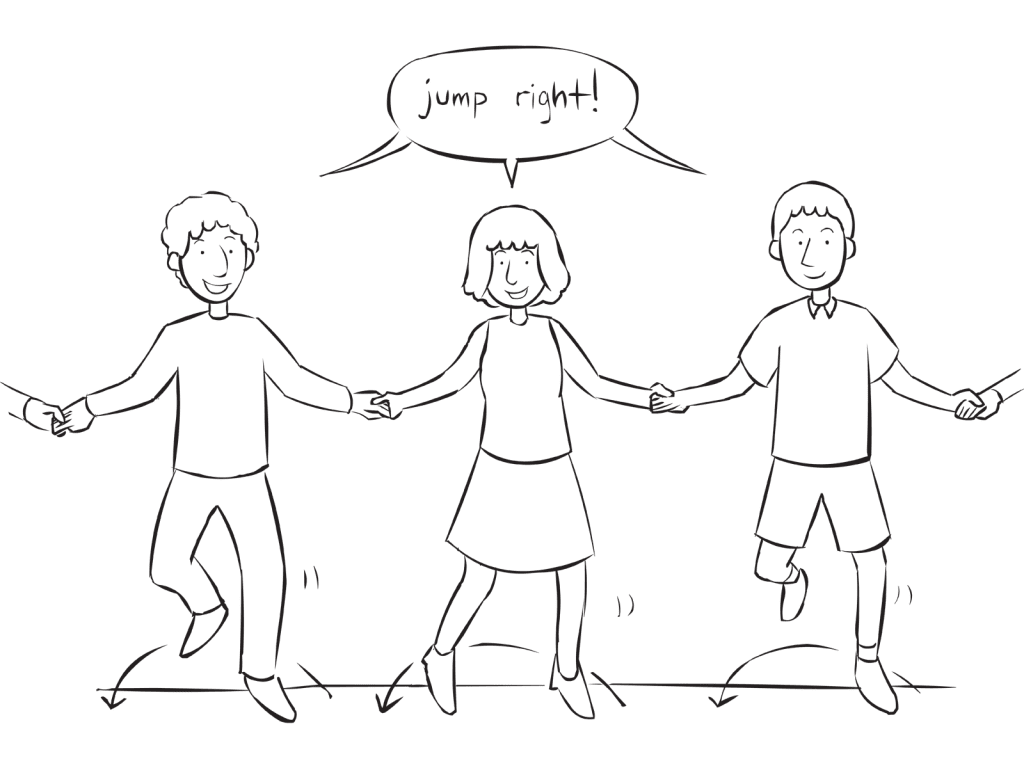Save to Playlist
Step-by-Step Instructions
Video Tutorial Premium
How To Play Narrative Premium
Practical Leadership Tips Premium
Social-Emotional Learning Premium
Health & Wellness Programming Premium
Popular Variations Premium
You Might Also Like... Premium
Virtual Adaptation Premium
You Might Also Like... Premium
Useful Framing Ideas Premium
Reflection Tips & Strategies Premium
Program Templates Premium
Source Premium

No Props No Problem
Brand NEW book featuring 150+ outrageously fun group games & activities. Scan QR codes to connect to tons of digital content including video tutorials.
Add to Cart
NEW – No Props No Problem
The best-selling book featuring 150+ outrageously fun group games & activities. Scan QR codes to access exclusive digital content including video tutorials.

Free Ice-Breakers & Group Games
Ten of the best no-prop, interactive ‘get-to-know-you’ games & activities. 100% fun, your group will love ’em. Our most successful giveaway, 10,000+ downloads so far…
Top Ten Icebreakers & Group Games
Download our free 28-page ebook jam-packed with outrageously fun activity ideas.
Just one more question:
I am interested in…
Choose a plan that’s right for you
We offer a range of membership plans with no surprises.
Click an option below & discover our simple pricing.

Individual
Click here if you’re a:
- Teacher
- Corporate trainer
- Outdoor educator
- Camp leader
- Youth leader
- Conference organiser
- Therapist/counsellor
Membership Plans

Enterprise
Click here if you represent a:
- School
- Corporation
- Community-based Organisation
Explore plans for
10, 50, 200 or more
potential users
Membership Plans






I love this game. I do it with kids as a convening activity. It helps to do a game like this and emphasize the importance of listening to the instructions… After the game is complete and we debrief I go into the rules, expectations, and schedule for the day!
Sounds like a perfect way to engage your group and invite them to have fun.
I really love this activity because of how versatile it is. I use it for so many things, but I really love it for discussing communication and the importance of defining language, specifically language around organizational values, norms, and principles.
I have always done this one without holding hands, and recently have added two more directions: turn left (90°turn to the left) and turn right (90° turn to the right). my intention for groups is that they define and own as much of the process and experience as possible. this addition begs the question “when we make a turn, which way becomes in? is it our new forward, or is it the direction we experienced as “in” during the framing? maybe we need to redefine it or our set up altogether?” I give that conversation back to the group and ask them what they think, and encourage openness to change if the way they define it is still disrupting their ability to navigate the challenge.
I’m so glad you have enjoyed JIJO and now, as a virtual exercise. Have FUNN 🙂
I have loved this activity for years – thank you so much Mark for this – today I will use it for the first time virtually to enhance body-mind coordination! Am so looking forward to it. Cheers & God Bless
This game is great to play when kids get off the bus! It gets them moving after a long ride. I love all the variations!!
This activity is why I’m connected with Playmeo! A random google search came up with Mark on YouTube presenting JumpIn, JumpOut. It is my opener for nearly every group I facilitate. Circles as small as 10 and as large as 150 from manufacturing to Microsoft, this activity immediately gets people active, connected and laughing. For huge groups or big groups in awkward spaces, you can do multiple circles.
So pleased you stumbled across me and playmeo Steve. Welcome aboard. May the fun continue for you and your groups…
Great activity especially with the younger kids. Very useful when you want to focus the group as well as they have to listen to every instruction.